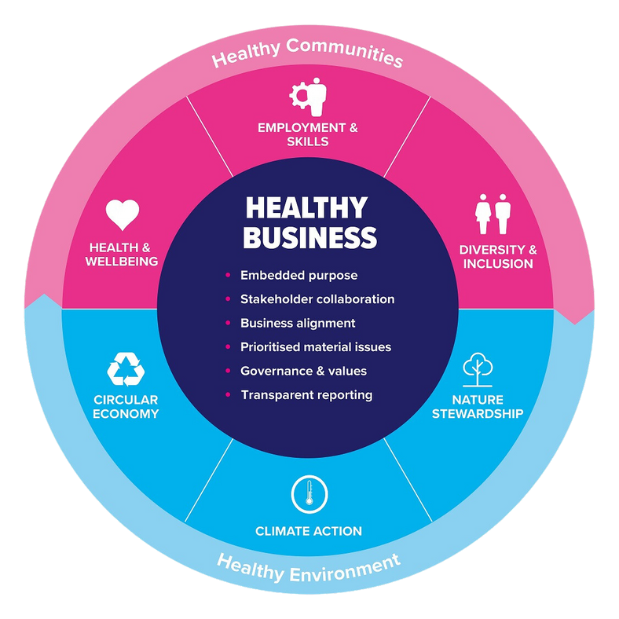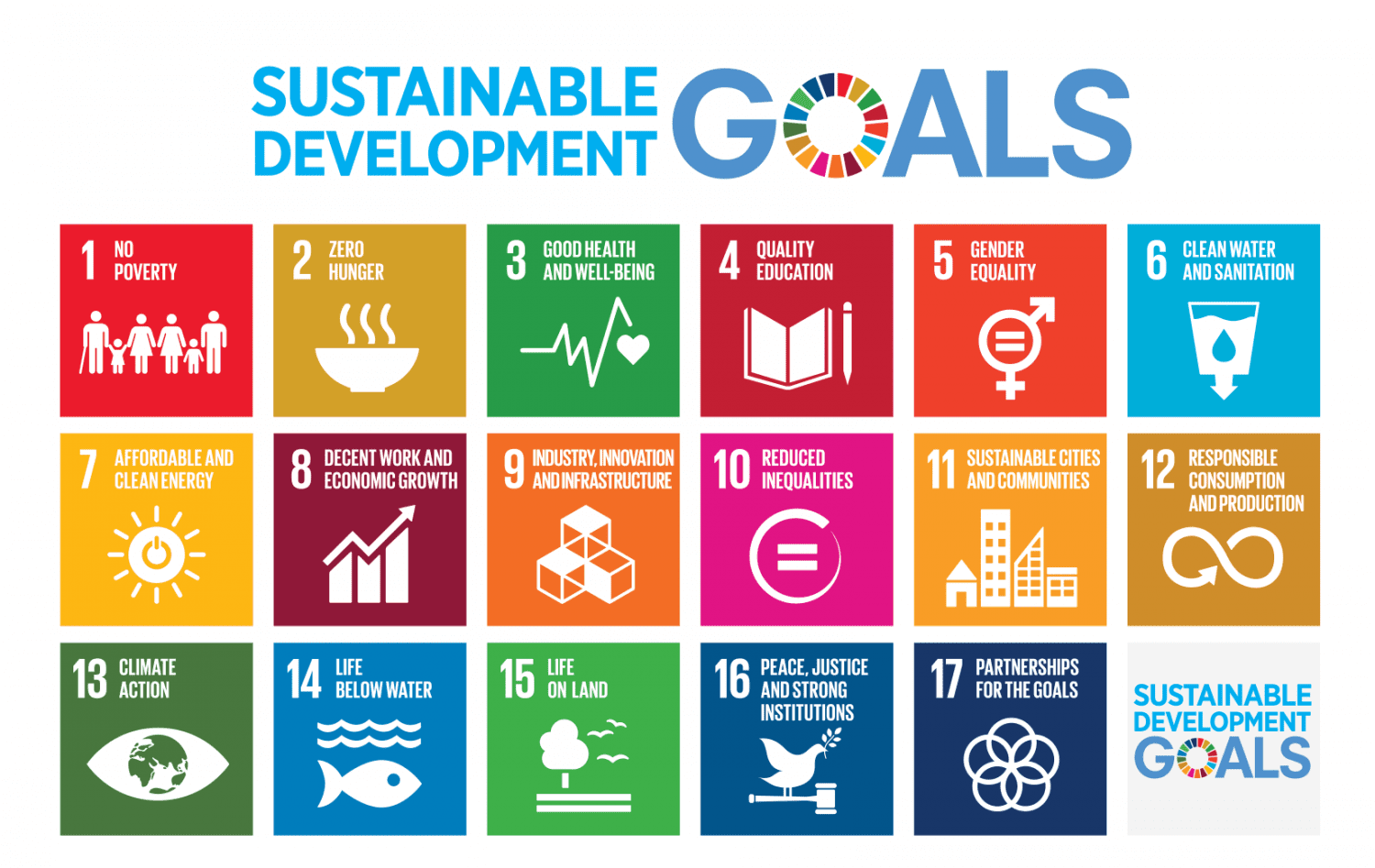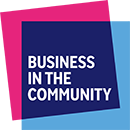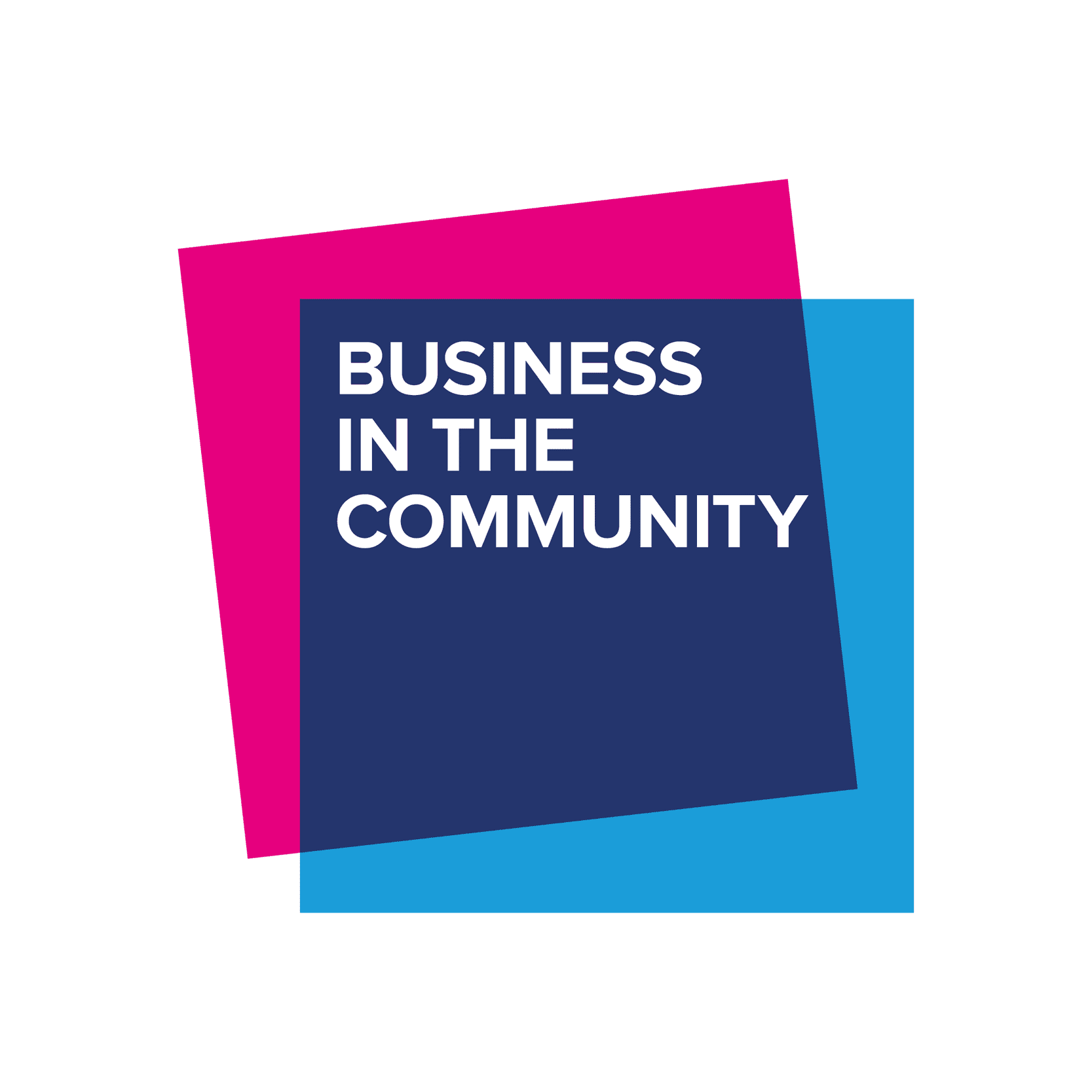The Responsible Business Map
The Responsible Business Map

we believe THE prosperity of business and society is inextricably linked


Business in the Community (BITC) defines a responsible business as a healthy business. It is one that puts creating healthy communities and a healthy environment at the centre of its strategy to achieve long-term value. Our Responsible Business Map guides our members on a journey of continuous improvement, working across the whole responsible business agenda.
The outer part of the Responsible Business Map shows the areas business should work on to achieve positive societal and environmental outcomes, summarised as Healthy Communities and Healthy Environment. There are five aspects to being a Healthy Business, represented in the inner map. For each area of the map there is a desired outcome to strive for, based on the UN Sustainable Development Goals (SDGs or Global Goals), and actions business can take to achieve them. These are set out in detail below.
The Responsible Business Map and the Global Goals
The Responsible Business Map was built on on the UN’s Sustainable Development Goals (SDGs), also known as the Global Goals. These give a blueprint for what is needed to achieve a world without poverty and hunger, and a healthy planet with peace and prosperity for all. Agreed by 193 countries in 2015, the Global Goals are a chance for everyone to talk a common language, create action and measure progress, giving clarity on what must be achieved together.
Business in the Community is working with business to accelerate the pace and scale of action to deliver against the 17 Global Goals. While business engagement with the Global Goals is imperative for the wider world, it also opens business market opportunities, whilst finding shared value for communities and environments. Find out more about BITC’s work on the Global Goals.
The Responsible Business Map
Healthy Business
To be a responsible business organisations need to be underpinned by responsible governance and transparency. The inner part of the Responsible Business Map lists five aspects a business needs to consider in this area. These need to be accompanied by leadership at every level.
Responsible business demands purposeful leaders drive leadership at every level across the business in order to
- understand where an organisation can have the most impact by identifying those material issues that are of greatest importance to commercial success, key stakeholders, and the long-term benefit to society.
- drive a transparent, inclusive, and productive value chain. Support and empower customers and deliver products and services that serve society.
- move from a do-less-harm approach to one of genuine positive change. Create competitive advantages, meeting changing customer needs. Attract, retain, and develop the best talent.
- accept and welcome the changing nature of work.
- understand how to embrace opportunities brought by digital innovation (e.g. more efficient use of resources, access to new markets) and manage the unintended consequences (e.g. cybersecurity, access to jobs, inequality).
- adopt a long-term view of natural and human capital, creating a positive legacy. Base investment decisions on long-term economic, social, and environmental sustainability.
- Nurture a generation of responsible future leaders.
Find out more about creating a healthy business:
Purpose and Values
Outcome
Purpose-led businesses and brands as a genuine force for positive change, moving away from a do-less-harm approach, to creating competitive advantages, meeting changing customer needs, and attracting, retaining and developing the best talent (SDG 8, 9, 10, 16, 17).
Actions
- Understand and articulate your purpose, conveying why your business exists, including the impact it wants to have on the world.
- Ensure your purpose is underpinned by values which determine the boundaries by which your business operates and create a culture of responsibility. Ensure your purpose guides and informs your commercial strategy, product range, innovation, new ways of working, and workplace behaviours.
- Adapt your business model to achieve your purpose.
Governance and Transparency
Outcome
Increased trust in business and enhanced belief in the potential for business to be a force for good, resulting in loyal customers, a licence to operate and increased brand value. Trust is gained when stakeholders have confidence in a business’s leadership, and that those leaders have the skills and knowledge needed to make business decisions that align to a responsible purpose and ensure long-term sustainability.
Real leadership on an issue can be evidenced by an authentic, consistent and transparent advocacy within the organisation, with industry peers and publicly (SDG 16, 17).
Action
- As a business leader be inclusive and accountable, balancing short-term pressures with longer-term resilience.
- Checks and balances should be robust and strategy and operations transparent. This includes executive remuneration, board composition, accountability oversight, selection of pension funds and payment of the fair amount of taxes in all geographies.
- The highest standards need to be upheld across all operations, especially in countries of weak governance. This should be in line with national legislation wherever you operate, and on issues of public interest you need to go beyond legislation and usual practices to act in accordance with your purpose and values.
- Engage in policy dialogue that upholds the interest of society.
- Be transparent and proactive in approaching public policy activities and align lobbying with your values.
- Advocate, internally and externally, for responsible business issues that materially impact your business and stakeholders.
- Base reporting and decisions on data and facts to drive change and build trust.
Stakeholder Engagement and Community Collaboration
Outcome
Businesses make informed decisions while being transparent and accountable to all stakeholders – internal and external.
They co-create new solutions that generate business value while establishing a better relationship and trust between businesses and the wider society. They work in strategic, long term partnerships that are needs-led, to make a positive and meaningful impact in communities. Societal problems are resolved better and faster through dialogue and multisector partnerships as they generate innovation, play to each partner’s strengths, and enable scalability of solutions (SDG 9, 10, 16, 17).
Actions
- Identify and consider your stakeholders and understand how your operations affect them, to find solutions that maximise value for all.
- Actively identify opportunities to collaborate with a range of stakeholders either across the industry sector or multi-lateral initiatives to solve systemic issues.
- Work collaboratively to leverage business skills and resources to address issues identified by your communities.
Value Chain
Outcome
Responsible business activities and outcomes are not limited to businesses’ operations but extend across their value chain, to suppliers, customers, partners, and local communities.
Businesses increase their understanding of the risks, opportunities, and impacts related to their products and services and make informed decisions to deliver value and create economic growth through an approach of collaboration and shared responsibility.
Resilient supply chains drive growth and prosperity and multiply impact, delivering social and environmental benefits at scale while creating business value.
No violations of human rights across the full value chain, with particular attention paid to countries of weak governance (All SDGs).
Actions
- Understand the impacts of your products and services throughout their whole lifecycle – from research and development to disposal – and ensure sales practices are ethical.
- Re-examine and innovate your approach to designing and delivering products and services in a way that will reduce the impact of resource scarcity on your ability to produce them.
- Go beyond basic risk management and compliance to protect human rights across and through your supply chain and direct operations. Be aware of the parts of your business that need the greatest attention and integrate human rights policies into every commercial decision.
- Use your purchasing power to select and engage suppliers and business partners to foster local economic growth, while driving resilience and environmental sustainability.
- Ensure fair sourcing practices that open opportunities for small- and medium-sized enterprises and social enterprises.
- Engage employees, customers and clients in responsible behaviour as well as the information and support provided to them. Equip them to make more sustainable choices.
- Identify the communities in which your business operates and work collaboratively to achieve shared value.
- Implement robust traceability mechanisms that guarantee visibility throughout your supply chain.
- Understand how existing and proposed activities may affect human rights (impact assessment), track performance for improvement and offer grievance mechanisms.
- Where infringements are found, act to ensure mistakes are not repeated and share knowledge to ensure others do not replicate bad practices.
- Review and, over time, evolve your product portfolio to be fully consistent with your stated organisational/brand purpose.
Digital Transformation
Outcome
The digital transformation drives smart forms of economic growth on a finite planet, reduces poverty and inequalities, and improves lives (SDG 1, 3 4, 5, 8, 9, 10, 11, 12, 13, 16, 17).
Actions
- Anticipate the unintended consequences of the digital transformation.
- Protect, support, and empower customers by simplifying data practices, being inclusive, and enabling better choices.
- Embrace the changing nature of work by preparing your employees with digital skills and lifelong learning.
- Anticipate automation, creating new roles, where technology complements humans. Support communities to manage the transition and extend your employer’s responsibility by providing security job and protection.
- Deliver innovative products and services that serve society by ensuring technology reflects human values and corrects unconscious bias.
- Drive a transparent, inclusive and productive value chain by providing digital solutions and training to achieve minimum social and environmental standards across the value chain. Minimise the environmental impact of operations, committing to renewable energy and zero e-waste. Use technology to address corruption, exploitation, and environmental harm.
The Responsible Business Map
Healthy Communities
BITC’s Healthy Communities, an outer section of the Responsible Business Map focuses on the influencing of responsible business practices that make jobs accessible and attractive to all. Once people are in post, employers must ensure their employees are healthy, happy and engaged. They should feel they belong, have a voice, are valued and are able to be their true selves.
Find out more about creating healthy communities:
Health and Wellbeing
Outcome
A healthier, happier and engaged workforce that drives sustainable performance and productivity, benefiting employers, employees, customers and making communities more resilient (SDG 3, 11).
Actions
- Take a preventative whole-person, whole-system approach to health and wellbeing that gives employers and employees collective responsibility.
- Invest in community initiatives that promote physical and mental health.
- Consider how your operations can promote healthy spaces that are restorative and enriching for both physical and mental health.
- Consider and act on the wellbeing impacts of your products, services and operations throughout your value chain.
Employment and Skills
Businesses create the conditions for every person to achieve a successful and rewarding working life. To achieve this business needs to consider how they prepare people for the workplace through education and ensure they are creating good jobs that are accessible to all.
Outcome
EDUCATION: Investment so that people can transition into the jobs of the future. Businesses are more adaptable and resilient to market disruptions; they find the skills and knowledge they need in a fast-changing marketplace and they benefit from a more engaged workforce. Businesses create the conditions for the wider society to make decisions that embrace sustainable development (SDG 4, 5, 10).
INCLUSIVE EMPLOYMENT AND GOOD WORK: A resilient society where employers and stakeholders work together to continually reduce inequalities. Businesses help achieve full employment, by ensuring good jobs are accessible to all; increasing levels of pay and ensuring good terms and conditions of all employment. Businesses also invest in skills at every level whilst making the most of, loyal, skilled, and fulfilled employees who come from a range of backgrounds. Communities are prepared and able to respond to and mitigate social and environmental change (SDG 1, 2, 3, 8, 9, 10, 11).
Actions
- Engage with young people to help them realise their potential and understand the opportunities available through work. Break down traditional barriers of entry and prepare them for success in entering and thriving in the workplace.
- Invest in education and learning in the communities in which your business operates.
- Invest in bringing down the barriers to employment of disadvantaged groups so they can access good work in your business or others.
- Invest in initiatives across your value chain, so people are equipped with relevant information to understand their individual impact on the environment and society.
- Provide good jobs, both to your direct and indirect workforce, which offer security, rights and a fair income. Good jobs also offer the opportunity for personal development and progression, and a supportive and inclusive environment in which all employees can thrive.
- Understand how the changing nature of work will affect your organisation and individuals who work for you. Plan and take action to support employees at all levels.
- Provide open communication channels and transparent decision making. Offer continued learning, professional development and progression routes which enable people to move through the whole organisation.
- Work alongside the communities where your organisation operates to support them in preparing, recovering and adapting to social and environmental changes (e.g., job automation and natural disasters) including contributing to creating resilient and sustainable urban spaces.
Diversity and Inclusion
Outcome
Individuals’ career prospects and progression are independent of their personal characteristics, background and circumstances. Businesses benefit from a diverse workforce and can access diverse markets to grow their talent pipeline. Individuals can live safely, free from abuse and neglect (SDG 5, 10).
Actions
- Ensure that protected or defining characteristics do not determine an individual’s job entry or career path.
- Reflect diversity and culture across all levels with role models visible to the next generation of talent.
- Offer fair, equal, and unbiased recruitment, promotion and reward systems and safe, inclusive, and agile work environment where all talent can thrive and bring their whole selves to work.
- Ensure diversity at leadership levels, so all opinions are considered in decision making, and no social group is affected more than others in the event of social and environmental disruptions. Understand, respect, and protect cultural heritage, in line with the protection of human rights.
- Ensure that the your commitment to diversity and inclusion is reflected throughout your products and services.
The Responsible Business Map
Healthy Environment
Business in the Community’s (BITC) environment campaign, the third outer section of the Responsible Business Map encourages innovative and transformational change at the core of businesses. Our programmes focus on building a one-planet economy that delivers lasting prosperity through the Global Goals.
Find out more about creating a healthy environment:
Climate Action
Outcome
Limiting increase in global average temperature within the century to 1.5C (SDG 7, 9, 11, 12, 13).
Actions
- Understand climate change risks to your business and develop an ambitious climate change strategy that measures impacts and delivers positive business, environmental, and societal outcomes.
- Work to eliminate greenhouse gases from your direct operations as soon as possible.
- Innovate, collaborate with, and support your value chain and wider industry to eliminate greenhouse gases as fast as possible, thus mitigating the indirect impacts linked to your products & services.
- Support employees and communities to take environmental action.
- Invest in nature-based solutions as a way to restore nature and enhance the ability of natural sinks to absorb carbon emissions.
Circular Economy
Outcome
Natural capital is restored, preserved, and enhanced, resource yields are optimised, waste is designed out of the product cycle and the risks associated with finite raw materials are minimised. Stimulating innovation and creating sustainable long-term growth and new employment opportunities (SDG 6, 7, 9, 12, 14, 15).
Actions
- Commit to the principles of a circular economy by seeking to keep products, components and materials at their highest utilisation and value throughout their lifecycles.
- Support the use of renewable resources and identify ways of designing out waste and recovering it back into production processes.
- Embed a circular approach to procurement and supply chain management.
Nature Stewardship
Outcome
Increased resilience of urban and rural landscapes that protect natural assets, support wellbeing, and help climate proof community and business assets. Business investment in restoring nature reduces human vulnerability, preserves biodiversity, and contributes to positive societal and economic outcomes (SDG 11, 14, 15).
Actions
- Identify where your business impacts on ecosystems that support the environment and enable society to thrive in rural and urban contexts.
- Understand the risk to the resources you depend on and take steps to improve the health of water, land, biodiversity, and air quality.
- In urban environments, identify where green and blue infrastructure can be used to increase resilience and support sustainable communities and cities.
- Identify opportunities to invest in preserving nature to achieve outcomes across multiple societal and environmental issues, such as health and wellbeing, climate action and circular economy.
discover more
GLOBAL GOALS
TOGETHER WE CAN CHANGE THE WORLD




